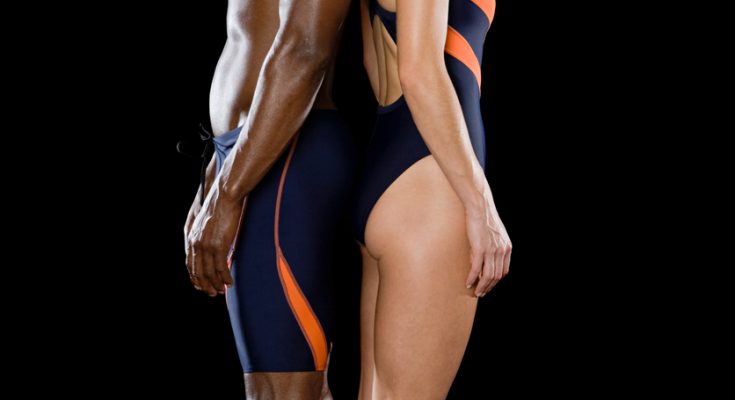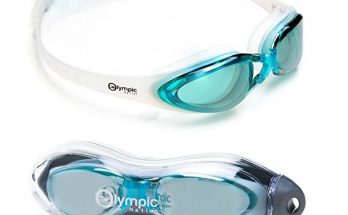What is Swim Compression Wear? If you’ve never heard of it, Swim Compression Wear is an assortment of form-fitting articles of clothing that purport to enhance an athlete’s workout performance, including their warm-up and recovery time. Some specific attributes of wearing these garments include, but are not limited to, stabilizing joints, wicking sweat from the body (prevents chafing, rashes), relieving muscle and joint pain from stiffness and soreness, and preventing muscle strain by keeping them warm. https://en.wikipedia.org/wiki/…Those are some very BIG claims! Especially because some of these garments are made of particular fiber technology, others, cotton and still others spandex. Is all this just a lot of hype or can we believe that mere apparel can make that much of a difference in our exercise routine?
The Science – Does it Work?
The National Library of Medicine has several hundred studies on compression clothing, and only ten to fifteen adequately cover the topic. Of those, most are not well-controlled studies and, therefore, cannot be considered a significant rendering for reliable results from their findings.
In an article titled General Considerations for Compression Garments in Sports: Applied Pressures and Body Coverage (Click Here for free PDF) there is an in depth analysis on issues of ideal body profiles for optimum efficiency, resting supine versus upright exercising related to compression, effects and influence of applied pressure, desired best suits and their applications, outcomes and specific clarification of pressure treatment, venous (relating to veins) clinical trials, and arterial studies (pertaining to blood in pulmonary veins), oscillation decreasing, fabric extension and elasticity, and much, much, much more.
 Wait! WHAT?
Wait! WHAT?
Yes, it’s lengthy, but a good source for answers to the compression clothing question – does it work? In its final comments, it states the following, “It seems unlikely that one particular pressure profile will best suit all desired applications and outcomes…” In other words, a suit even if it comes in all shapes and sizes, cannot pin point precise areas of the body (multiple bodies, in this case) where compression is needed.
If the Suit Doesn’t Fit, Should We Call It all Quits?
From swaddling clothes for babies to the R.I.C.E. protocol (Rest, Ice, Compression, Elevation), compression therapy is here to stay. In fact, compression garments have been providing support for people for years. They were first introduced medically more than 60 years ago with the creation of a compression stocking to be worn around the legs and ankles applying pressure to those areas. These stockings were used in hospitals on patients with venous blood flow issues in order to prevent thrombosis.
Next, the American Journal of Medicine began conducting controlled clinical trials to determine the effects of wearing compression clothing related to sports in the late ’80s. Their conclusion was that athletes darning these compression socks during rigorous activity did exhibit less swelling, and the socks did help with blood transport, resulting in decreased pooling. These studies beget a flutter of excitement in sports. The notion of quicker recovery times after exertion and better blood flow are very appealing.
In the swim world, tech suits, or compression swimwear are now all the rage. In the 2009 World Championships in Rome, Paul Biedermann blows Michael Phelps out of the water in 200m. Mr. Biedermann was wearing a tech suit, the Arena X-Glide, a polyurethane suit, said to turn a swimmer’s bodies into a sleek kayak. Michael Phelps wore a Speedo LZR Racer, that is not as buoyant as the Arena X-Glide. Biedermann shaved 4 seconds off his time in a year. These tech suits are said to reduce drag and improve oxygen efficiency. There is nothing better than that for a competitive swimmer. This tech suit issue was so revolutionary at the time that it sparked a debate with the officials of the Fédération Internationale de Natation (English: International Swimming Federation) FINA. (Click Here for Story)
Are the Clothes Making the Athlete or is it all in the Mind?

If one wears a “power suit” to an important business meeting and thus feels more empowered, then the suit was necessary to some degree. If a prom dress makes a teenage girl feel prettier and more confident, then that gown is a crucial part of that young lady’s life experience, and plays a role in her development. Superman’s cape, Batman’s tights, all articles of clothing producing an experience for the wearer that in many ways, shape who they are. There is plenty of science (Psychology) to support the building of one’s self-esteem by dressing the part for the task at hand.
Conclusion
Ultimately it’s about how one feels when they are doing their workout, or competition, or their recover time after either. Swimfolk like compression suits for swimming. These garments are comfortable and make you feel light as air. The snug fit is invigorating as it supports. We’re looking forward to, but will have to wait for, technology improving on the beneficial aspects of compression clothing and making these garments even better.
If you found this post helpful, leave a comment below.








Love it.. modern technology is amazing! It’s encouraging to know this type of technology can inspire you to turn to swimming to help relieve body ache.
Thank you, Dee for visiting Swimfolk. If you buy some tech wear let us know what your thoughts are about it.
Hi Beverly, a very thorough and interesting article. If compression swim suits help the wearer to feel more confident and build their self esteem I am all for it.
Hi Beverly, my son is in soccer and he comes home complaining of shin splints a lot. He says that his compression socks help. So if he believes the benefit of compression wear is helping him, that’s all that matters to me, I buy it.
I did not realize that compression wear is available for swimmers, that’s good to know.
Keith, I’m so glad your son has gotten something out of compression wear. As stated, the socks were part the first articles of clothing to be used in a medical capacity and the compression for those are really localized to the feet and ankles. So, there is a real science there that they work! Please read about what happened to Michael Phelps on the swimsuits. It’s just a good read.
That’s really right. Helpful for me as well.
Thank you, Gear Bob, for stopping by Swimfolk and thank you for leaving a comment. Glad you found this information helpful. I keep trying new things and will let you know when the ultimate swim gear comes along. By for now, Beverly